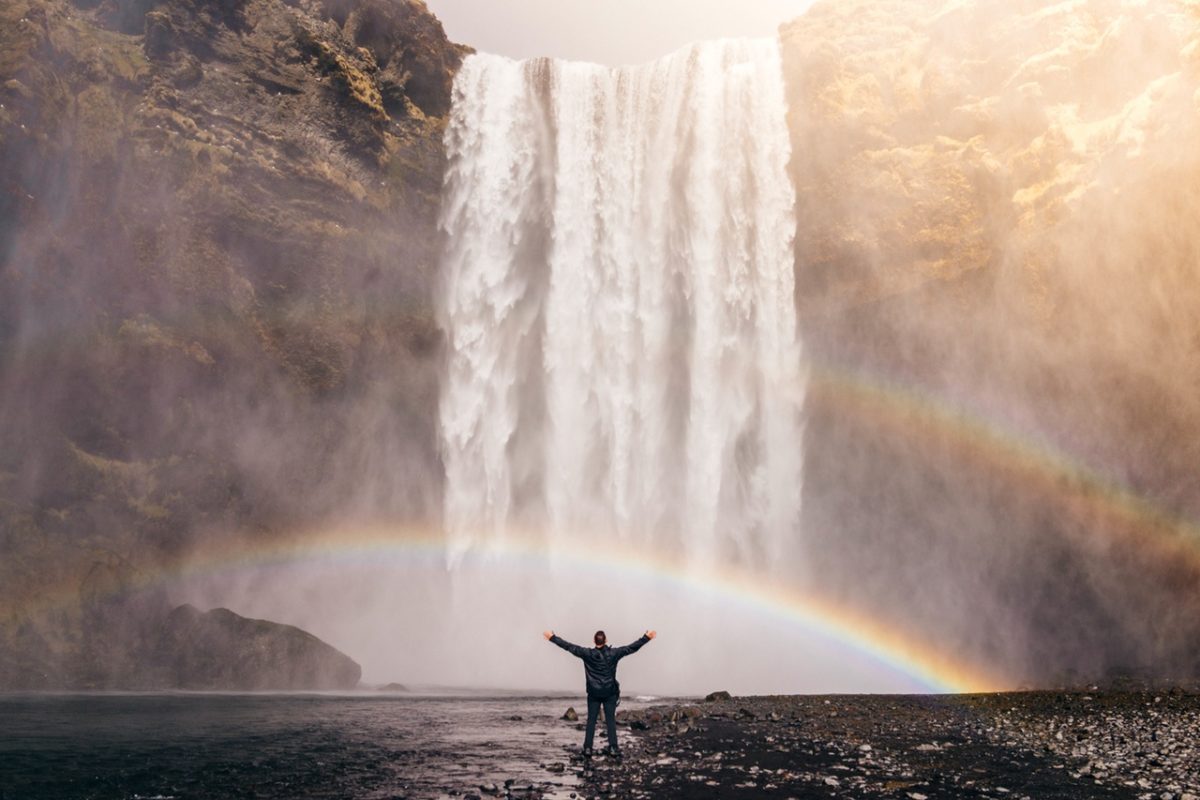Roy T. Bennet once said, “When things do not go your way, remember that every challenge— every adversity — contains within it seeds of opportunity and growth.”
And that has been the case with my mindfulness journey.
By now, you’ve probably heard how beneficial mindfulness can be in our lives. The benefits include better emotional regulation, reduced stress, anxiety, a boost in cognitive performance, and improved physical health, to name a few.
I have always wanted to live a happy, healthy, and peaceful life and I found mindfulness to be a good fit for me to achieve these 3 things in my life. I have worked with it for several years now and I have seen some improvements in various areas of my life because of it. However, I have also been faced with several challenges while trying to make it work.
The following is an account of my mindfulness journey to date: my personal experiences with it, the challenges I’ve met along the way, and the discoveries as well as unique solutions that have helped me overcome the hurdles and become more mindful.
My Mindfulness Journey in Brief
I remember very well when I got into mindfulness; it seems like it was yesterday. I desired to be more in control of my life. I used to be very shy, introverted, short-tempered, and very serious with life and I craved to be more social, understanding, and caring even when I was angry, and more open to life.
The anger issue was the main reason I wanted to be more mindful. I had read somewhere that mindfulness has the ability to help create mental space that would allow me better react to emotion-provoking situations and I wanted to have that so bad.
When I chose to begin mindfulness, my first mindfulness practice was mindfulness meditation. Since it helps give a taste of mindfulness, have a feel of what it is like to be mindful, and helps build the momentum of spilling over mindfulness into my daily activities.
I began meditating for 5 minutes and then increased the duration of my meditation sessions as I felt more comfortable with the practice. Soon enough I was meditating for 30 minutes and would feel deeply moved by the practice.
Eventually, in my quest to be more mindful throughout the day, I decided I would take up other mindfulness practices including mindful eating, mindful speaking and listening, mindful walking, and even mindful working so that I would have more moments of mindfulness in my typical day.
I took each of the practices one at a time and slowly but surely made them work in my life. And at the moment, I feel I have made fairly good progress with them and I can feel the effects of the improvements in my life even I grow more mindful every year.
However, the journey has not been as smooth as you may think. There have been many challenges along the way. From the time I was only doing mindfulness meditation to when I began incorporating other mindfulness practices into my routine, problems sprung up left, right, and center and really challenged me.
Here are the main obstacles I had a while back as I was doing my best to immerse myself deeply into mindfulness.
The Major Setbacks in My Mindfulness Journey
1. Constant Mind-wandering
This is a common occurrence during meditation. I would often find myself having drifted off to other thoughts without realizing it. I would begin by focusing and being attentive to the progress of my meditation session and what I needed to do, and soon enough I would discover that I entertained thoughts about my work, my family, and other distracting thoughts, and I had been completely diverted. The constant mental chatter keeps on happening and I still lose focus once in a while during my sessions to date.
2. Difficulty with remaining mindful over a long period when talking to people
When having conversations, I would start as being mindful, that is being mindful of myself as I listen to other people talk and when I was talking. I would be aware of my emotions and thoughts and how they changed, and I felt generally in control of myself. I would think before I speak, have good control of my reactions if the conversation was emotionally provoking and I would feel at peace. Deep peace from within that wouldn’t be disturbed.
However, as time went by, I would get lost in the conversation, my emotions would get the best of me and thoughts would race through my mind and I would speak them out without taking time to consider the effect they would have on other people. In the end, I would feel guilty, selfish and there would even be self-loathing afterward.
3. Feeling overwhelmed by mindfulness and lacking mental energy to keep at it
At times, I would meditate and feel good about mindfulness in the morning. I would even make the intention of remaining mindful throughout the day and would go ahead to try and make it happen. However, around midday or late evenings, I would start feeling mindfulness has taken the best of me and was starting to weigh me down. Instead of the good control of life I felt it gave me, I would feel like it was mentally stressful and it made me feel too alert in a negative way that made me lose my creative touch and composure.
4. Feeling like I had multiple personalities based on how mindful I was
As I progressed with my mindfulness journey, I would notice that there were times I was deeply mindful of my inner and outer world. When I talked to people, I conversed well and it felt right. I was aware of my thoughts and feeling even sensations and I felt in synchrony with the universe. There were also times when I felt a lesser version of that, and there were times I didn’t feel any of that. I was doing the same throughout but the experiences were different. And I would notice that when things felt just right my personality was really good, and when I experienced the lesser version of that things were slightly better. And when I didn’t feel anything, I would be “all over the place” with my thoughts, actions, and emotions. This felt like I was different people at different times and I wasn’t happy about it.
5. Becoming technical with mindfulness and seeing it as a tedious task
I have always been a bit busy with my work and family but I still wanted to make mindfulness part of my life. This meant practicing it despite my busy schedule and making time through my busy periods to remain mindful as I went on with my daily activities. However, it would get to a point where remembering to be mindful and redirecting my attention to my inner and outer environment felt too much of a task. I was already having demanding things on my plate and mindfulness was also stretching me mentally and emotionally, and I would feel like it was a tedious task.
6. Feeling like I’m being rude, selfish and inconsiderate of others because of mindfulness effects
The main aim of me doing mindfulness was to take charge of my life and be at peace by becoming more responsible with my words and actions. Initially, I was a thoughtless talker, quick to react but also very jovial and friendly with the people I was free with. However, as I kept practicing mindfulness and created mental space that made me think before I spoke and took action or even react, I also became more composed, less reactive in a good and bad way.
Instead of laughing my heart out at my friends’ jokes, I would smile or laugh briefly and this made me come across as rude and inconsiderate of the people I loved. They had not done anything to me but the change in my behavior made them question our friendship and they would often ask me about it. “Are you okay?”, “Is there something we did to you that you’re not telling us?”
My 5 Unique Solutions to Mindfulness Challenges
Every time I come to a mindfulness challenge, I take my time in the evening before I sleep and think about it in-depth, determining why I think it is happening and how I can solve it. I normally have a period of an hour before I sleep that I have dedicated to thinking about the problems in my life and coming up with proper and permanent solutions.
In the case of the mindfulness challenges I’ve mentioned, I not only thought deeply about them but also talked to other mindfulness practitioners and consulted a few meditation teachers so that I would get accurate solutions that would solve the problem completely. And here are the solutions I got which have been quite rewarding over the years and have minimized the challenges greatly.
Solution #1. Visualization
Visualization solves the two problems of feeling like you are having different personalities and not being able to remain mindful for long as you are talking to people. See, the reason why we behave differently when are going through the different levels of mindfulness is that we have allowed the journey and progress to influence our entire lives. And that is what we should do. However, we should top that up with our personal intentions and effort of becoming the kind of people we desire to be. This helps to regulate our personality and inclines us more towards what we want to be in the long term.
A good example of applying the visualization concept is by sitting down and taking time to visualize the kind of person you would want to become, the kind of personality you would want to have, and the attributes you would want to be known for. Then you go a step further and visualize different scenarios where you are applying those attributes and people are reacting the way you would expect them.
Imagine a scenario where you are with your friends and you have become grounded in your desired personality and you are talking and acting in accordance to that personality naturally and seamlessly. After that, set the intentions to do just that when you are done with the visualization practice and put in the effort of making it happen in your life consistently.
Apply the same idea and visualize yourself talking to people while being mindful for long periods naturally and easily, then set the intentions to do that going forward and actually do it.
Solution #2. Planning Your Mindful Day Ahead
Before I leave for work or to handle the day’s activities, I first plan my day. It takes about 5 minutes or less and it has a huge positive impact on my day and ensures I’m not feeling overwhelmed by mindfulness at any time. It also helped me make a smooth transition from being the person who expresses their emotions strongly to a quiet, composed but still friendly person to my friends and family.
I normally plan my day right when I’m about to open the door and get out of the house. I ask myself what I’m going to do first, what I need in terms of resources to complete the first task as well as the others, and then what I need to remember in terms of personality and the person I am working on becoming and the things I need to do and when I need to do them to keep going with this self-transformation journey.
Suppose I’ll be going to the mall and then meet up with my friends later for a cup of coffee and to catch up, I normally say to myself, I’m going to the mall to buy this product, which costs this much and here’s the money for it. And while I’m there I should be quiet, confident, composed, and aware.
Then I’ll go to meet my friends to catch up and I’ll only need to be aware and composed and friendly in a well-mannered way but still make my usual jokes but moderately. And if I wander away and get lost in the conversation and my level of mindfulness goes down and I notice it, I will redirect my attention to my inner and outer environment and then keep going.
And since I know I’ll have many moments of mind wandering, I’ll check up on myself immediately after I speak, or when I’m about to give my views, to ensure I’m still aware of myself.
And when I leave the house, I’m mentally prepared since I have planned myself so applying what I’ve planned in the real world becomes easy and fairly smooth for me.
For making sure I don’t come across as rude to my friends, I decided to keep doing what I was doing while with them and be overly expressive as I was, but slowly as we progressed with our conversations, I would be composed for a brief moment and then continue being expressive. And as I injected moments of composure while I still maintained my usual personality, they slowly got used to it.
Solution #3. Constant Remembrance
When it comes to constant remembrance, there are 3 ways to go about it. First, it refers to complementing the planning your mindful day ahead solution. When I make plans about my day especially the ones that focus on me remaining mindful and having those moments where I check in with myself to see if I’m mindful, constant remembrance helps to keep me in the right direction.
It is one thing to plan something and another to make it work, and constant remembrance is what helps make it work. By setting the intentions to remember constantly check in with yourself, you become more aware of the fact that you need to remember to actually do that, and soon enough it helps you be more mindful when you have forgotten about it.
Second, when I feel like mindfulness is a tedious task that is only making my day hard, I constantly remember why I chose to get into mindfulness in the first place and it helps me remember my purpose. With the purpose in mind, I can now feel the hectic and technical aspect of mindfulness that was making me feel exhausted with it disappear and I re-align myself with the purpose and it becomes more fulfilling.
Third, constant remembrance of the fact that the nature of the mind is to wander and that mind-wandering is going to happen every so often helps me to be easy with myself and gently redirect my attention to my practice when my mind drifts off.
Solution #4. Mindful Observation
Mindful observation of how I naturally do things has given me insight into where I am in my journey towards self-transformation and it also gives the motivation and opportunity to put in more effort into the needing areas so that I make even more progress and achieve what I have my eyes on sooner.
For me, mindful observation is about being mindful and observing your life without interfering with it. I observe how I think and feel about everything I’m involved in without making judgments or opinions about them. This includes how I speak and act when I’m alone versus when I’m around people, how I talk and behave when I’m in my high moods versus when something is disturbing me, and all other aspects of my life.
By being aware, I naturally find myself wanting to do things maturely and properly regardless of how I’m feeling. On top of that, it helps me know where specifically to direct my efforts so that I make the kind of change I want to happen in my life and succeed.
Solution #5. Mirroring
Mirroring is a technique where you mirror what you admire and desire to be and live as if you’ve already achieved it all. I have found that mirroring helps “get you there” mentally, emotionally, and even physically. By this, I mean that if you create the picture of the person you want to be with articulate details through the visualization method that I mentioned in solution #1 and then live as though you are that person, you will notice a huge improvement in the way you think, act and speak.
Applying that concept in mindfulness, if you live as though you are completely mindful and like you have mastered the quality of mindfulness and have gotten comfortable with it, you will notice that it is easy to get past your barriers with it.
I personally took one evening and visualized in great detail, how I would like to be when I’ve increased my level of mindfulness and had made it my second nature. I visualized how I would be living my life alone, how I would be interacting with people, how I would be going about the challenges I “once used” to have trouble with as a more experienced person and this gave me the confidence to get through the barriers I face and I also became more motivated to keep going with mindfulness.
Repeating this mirroring approach regularly as you prepare to begin your day and any time you are faced with a mindfulness-related problem can help you find reliable solutions and help you enjoy mindfulness and have an easier time with it.
Conclusion
And those are the 5 rewarding solutions that have helped me go a long way in my mindfulness journey.
I hope they will help you in one way or the other in your mindfulness journey too and will also set the pace for you to come up with your unique solutions too for your unique mindfulness challenges.
One more thing to note is that, while these solutions are beneficial and solve the problems I have discussed, implementing them and getting good results requires discipline, consistency, patience, dedication, and personal effort. By being committed to the goal of improving your level of mindfulness, doing all you can to make it happen, and not giving up or doubting yourself, you’re surely going to get there.
Which of the 5 solutions do you feel can help solve a problem you have in your mindfulness journey at the moment? Please let me know in the comments.






Reading this article has given me a fresh perspective on the challenges and solutions in practicing mindfulness. It’s a reminder that mindfulness is a journey, and it’s okay to face obstacles along the way. The author’s solutions resonate with me, especially the idea of visualization and planning the mindful day ahead. I believe these strategies can significantly improve not just my mindfulness practice, but also my overall mental health. I’m inspired to apply these solutions in my own mindfulness journey.